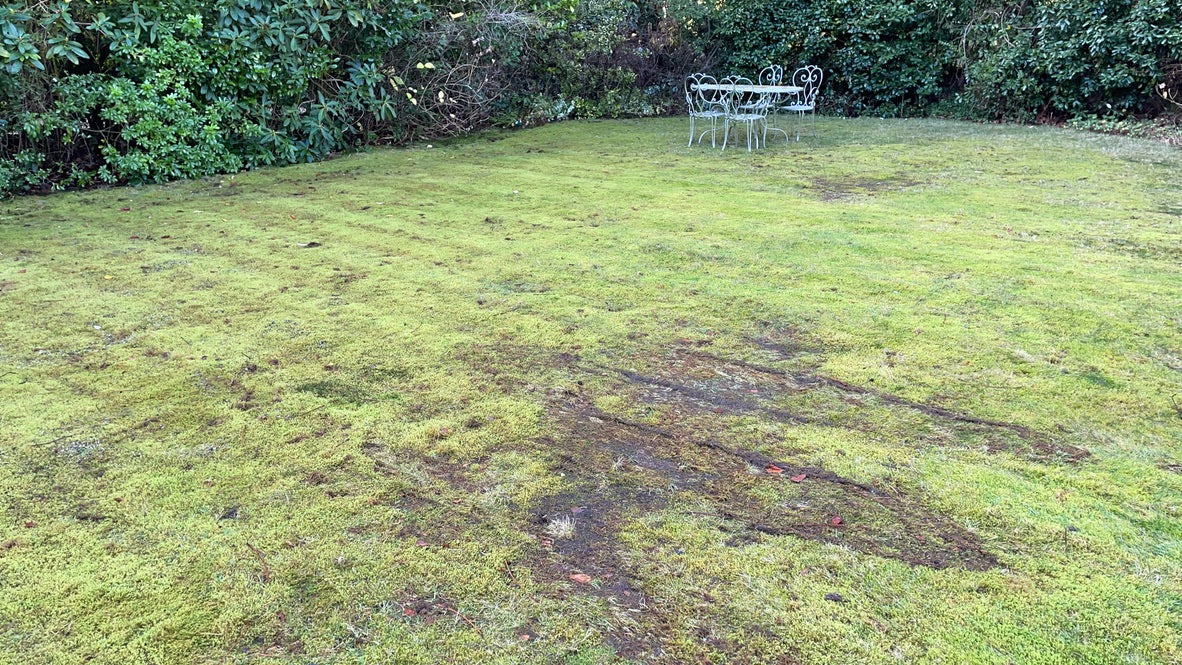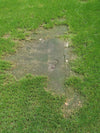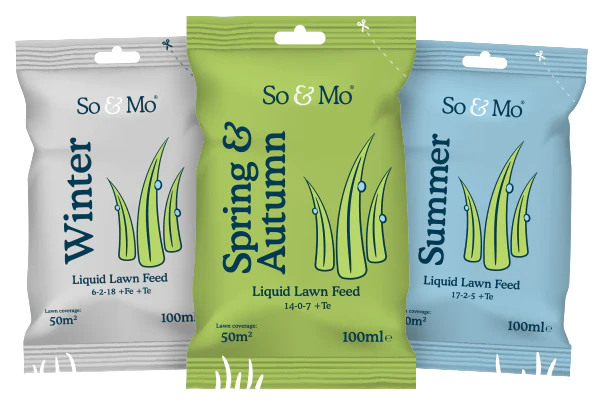
How to get rid of moss in lawn
The Ultimate Guide to Moss Removal from Your Lawn
Are you tired of the relentless moss invasion in your garden? Does the sight of your once lush, green lawn now blanketed in a layer of moss leave you feeling frustrated? You're not alone. Moss growth can be a persistent issue for many homeowners, transforming their beautiful turf into a spongy, green carpet. But don't despair, we've got you covered with our ultimate guide to moss removal from your lawn.
In this comprehensive guide, we'll delve into the world of moss, exploring why it chooses your lawn as its favourite hangout spot. We'll also arm you with effective methods to banish moss from your lawn, and more importantly, how to prevent its unwelcome return.
From understanding the role of soil conditions, shade, and water in moss growth, to choosing the right grass seed for a healthy lawn, we've got all the information you need. So, let's roll up our sleeves and reclaim your lawn from the clutches of moss!
Understanding Moss and Its Growth
Moss, a simple yet resilient plant, can easily establish itself in your lawn, particularly in areas where grass struggles. Understanding its growth patterns and the conditions it thrives in is crucial for effective moss control. Let's delve into the world of moss and its growth.
About Moss
Moss is a simple, ancient plant that thrives in areas where grass struggles. It has a shallow root system, making it easy to remove, but also easy to establish itself in your lawn. Unlike grass, moss doesn't require deep roots to survive, instead, it uses tiny white threads or fibres to anchor itself to the soil.
This plant is opportunistic, meaning it will take hold wherever it can. In your lawn, this typically means areas where the grass is thin or struggling. Moss acts as a groundcover, filling in the gaps where your grass can't grow.
Despite its simplicity, moss is a resilient plant. It can provide a low-effort, year-round green for your landscape, even in conditions that are unfavourable for grass. However, it's important to note that moss doesn't tolerate foot traffic well, so it may not be the best choice for high-traffic areas of your lawn.
In summary, moss is a simple, opportunistic plant that can easily establish itself in your lawn, especially in areas where your grass is struggling. Its shallow roots make it easy to remove, but also easy for it to take hold.
Why Moss Grows in Your Lawn
Moss thrives in your lawn due to certain conditions that are not favourable for grass growth. It's an opportunistic plant, seizing any chance to spread where grass is thin or weak.
Moss prefers damp, shady areas and acidic soil, which is why it often appears in parts of your lawn that don't get much sunlight or have poor drainage.
It's also a sign that your lawn's soil may be lacking in essential nutrients, making it difficult for grass to establish a strong root system.
In essence, moss is a symptom of an unhealthy lawn, indicating that your grass needs more care and attention.
The Role of Soil Conditions in Moss Growth
Soil conditions play a pivotal role in moss growth. Moss thrives in acidic soil, where the pH level is low. This environment is often unsuitable for grass, leading to thin patches where moss can take hold.
The soil's fertility also impacts moss growth. If the soil lacks essential nutrients like nitrogen, phosphorus, and potassium, grass struggles, giving moss an upper hand.
A soil test can reveal these conditions, guiding you on necessary amendments. By adjusting the soil's pH and nutrient levels, you can create an environment more conducive to grass than moss.
Remember, moss is a symptom, not the disease. Addressing the underlying soil conditions is key to long-term moss control.
The Impact of Shade and Water on Moss Growth
Moss thrives in areas where grass struggles, often due to shade or excess water. Unlike most turfgrass, moss loves the shade. If your lawn is constantly under a canopy, moss will likely flourish while your grass withers.
Watering habits also play a significant role in moss growth. Overwatering can create a moist environment that moss loves, but grass finds inhospitable. Conversely, under-watering during droughts can thin out your grass, giving moss an opportunity to establish itself when the rains return.
Improper drainage can exacerbate the water issue, leading to waterlogged soil that moss thrives in. On the other hand, a well-irrigated lawn with adequate sunlight is less likely to harbour moss.
In essence, the balance of shade and water in your lawn can significantly impact moss growth. Adjusting these conditions can help control moss and promote healthier grass growth.
Methods to Remove Moss from Your Lawn
Struggling with moss in your lawn? Let's explore various methods to remove moss, including chemical, organic, and manual techniques. Each method has its unique benefits and drawbacks, so choose what suits your lawn best.
Chemical Method
The chemical method is a popular way to remove moss from your lawn. This involves using herbicides, often iron-based, which not only kill moss but also nourish your lawn.
You can find these products here. Ensure you choose a product specifically designed for moss, as other herbicides may not work and could potentially harm your turf.
The best time to apply these herbicides is during the moss's peak growth season, typically in the damp, cool weather of spring and early autumn. However, you can still effectively kill moss with herbicides at any time of the year and we treat in the winter with our plan.
Remember, always follow the safety instructions on the package when using these products.
Organic Method
The organic method of moss removal is a safe and eco-friendly alternative to chemical treatments. This method involves creating a homemade solution using either dish soap or baking soda mixed with lukewarm water.
For the soap method, combine 2-4 ounces of gentle dish soap with two gallons of water. If you prefer using baking soda, mix a small box of it with two gallons of water.
Apply this solution to the moss using a garden sprayer, ensuring it's thoroughly saturated. Don't worry about harming your grass; these solutions are gentle on turf.
After 24 hours, the moss should turn orange or brown, indicating it's dead and ready for removal with a rake. Dispose of the dead moss in sealed bags to prevent spores from spreading.
Manual Removal
Manual removal of moss from your lawn is a straightforward process. It involves using a rake or a dethatching blade on a mower to strip away the moss. This method may require several passes to ensure all moss is removed.
After displacing the moss, it's crucial to remove it from the lawn. However, it's unlikely that you'll be able to remove all traces, as spores and small moss pieces will remain in the soil.
If the conditions that led to moss growth aren't addressed, the moss will re-establish itself. Therefore, manual removal should be the first step in a comprehensive moss control strategy.
Remember, moss is a simple plant with shallow roots, making it relatively easy to remove. But, removal is just the first step in total moss control.
Preventing Moss Regrowth in Your Lawn
Preventing moss regrowth in your lawn is a multi-step process that requires careful attention to detail. This section will guide you through the necessary steps, from improving soil conditions to growing healthy grass, to ensure your lawn remains moss-free.
Improving Soil Conditions
To prevent moss regrowth in your lawn, improving soil conditions is crucial. Start by testing your soil's pH level. Grass thrives in soil with a pH between 6.0 and 7.0, while moss prefers acidic soil. If your soil is too acidic, consider adding lime to raise the pH level.
Next, check your soil's nutrient content. Grass needs adequate amounts of nitrogen, phosphorus, and potassium to grow healthily. If these nutrients are lacking, moss can take over. Applying a suitable fertilizer can help replenish these nutrients.
Also, pay attention to soil compaction. Compacted soil restricts the movement of oxygen, water, and nutrients to grass roots, making it easier for moss to invade. Aerate your lawn to alleviate soil compaction and promote healthy grass growth.
Lastly, excessive thatch can also encourage moss growth. Dethatch your lawn to remove moss and improve soil conditions. Remember, a healthy lawn is your best defence against moss.
Managing Water Drainage
Managing water drainage is a crucial step to prevent moss regrowth in your lawn. Overwatering or poor drainage can create a moist environment, which moss loves.
Monitor your lawn's water intake, supplementing rainfall only when necessary. Use a rain gauge to keep track of the amount of water your lawn receives.
If your lawn is prone to waterlogging, consider improving its drainage. This could involve grading your lawn, filling in low spots, or even installing a drainage system.
Remember, a well-drained lawn is less likely to encourage moss growth, giving your grass a better chance to thrive.
Controlling Shade Levels
Controlling shade levels is crucial to prevent moss regrowth in your lawn. Moss thrives in shady areas, unlike most grass types. If your lawn is struggling, consider pruning your trees to allow more sunlight.
Alternatively, you can opt for shade-tolerant grass varieties like fine fescue or St. Augustine. These grass types can withstand less sunlight and still maintain healthy growth.
If you can't reduce the shade, consider using ground covers like sweet woodruff or periwinkle. These plants can thrive in shady spots and prevent moss from taking over.
Remember, a well-lit lawn is less likely to harbour moss. So, control your shade levels effectively to maintain a healthy, moss-free lawn.
Growing Healthy Grass
To prevent moss from taking over your lawn, focus on growing healthy grass. A dense, deep-rooted lawn leaves little room for moss to thrive. It's a battle for nutrients, water, and light, and a robust lawn is your best defence.
Remember, the healthier your grass, the less chance moss has to establish. So, invest time and effort into lawn care. Regular watering, mowing, and fertilising can make a world of difference.
Lastly, consider seeking professional advice. Our experts can provide tailored solutions to keep your lawn moss-free and healthy.
Lawn Care After Moss Removal
After successfully removing moss from your lawn, the next crucial step is to focus on lawn care. This involves repairing any damage, renovating the turf, and implementing a maintenance routine to ensure a healthy, moss-free lawn.
Repairing and Renovating Your Lawn
After removing moss, it's crucial to repair and renovate your lawn. Start by seeding bare patches to encourage new turf growth. If moss has severely damaged your lawn, consider a complete overhaul.
Clayey soils or heavy foot traffic can lead to poor drainage, a condition moss loves. Improve this by aerating your soil and adding compost.
Check for soil compaction by testing the depth of your turf roots. If they're shallow, your soil is likely compacted and needs aeration.
Lastly, if your lawn collects standing water, consider improving your drainage systems. This could involve levelling the ground or installing a French drain.
Choosing the Right Grass Seed
Choosing the right grass seed is crucial in maintaining a moss-free lawn. Opt for top-quality seed, which is known for its deep roots and dense growth. This type of grass outcompetes moss by absorbing more nutrients, water, and light.
Remember, the type of grass you choose should be suitable for your soil's pH level. Grass generally thrives in soil with a pH level between 6.0 and 7.0.
Lastly, consider your lawn's specific needs and conditions when choosing your grass seed. This will ensure a healthy, lush, and moss-free lawn.
Maintaining Your Lawn
After moss removal, maintaining your lawn is crucial to prevent its return. Regular watering is key, but avoid overdoing it as it can encourage moss growth.
Monitor rainfall and only supplement when necessary. Keep an eye out for signs of drought stress in your grass, such as wilting or dull colour.
Aerate and dethatch your lawn as needed to improve drainage and prevent soil compaction. This will ensure your grass roots receive adequate oxygen, water, and nutrients.
Lastly, consider the foot traffic on your lawn. Heavy traffic can lead to soil compaction, which inhibits healthy grass growth. If your lawn sees a lot of activity, regular aeration may be necessary.
Moss as a Lawn Alternative
Considering moss as a lawn alternative can be a game-changer. It's a low-maintenance, year-round green solution for areas where grass struggles to thrive. Let's delve into when and how to make this switch.
When to Consider Moss as an Alternative
Moss can be a viable alternative to grass in your lawn. It's worth considering when your grass struggles, but moss thrives.
Moss is low-maintenance and provides year-round greenery. It's an excellent choice if you're seeking a less labour-intensive lawn.
However, bear in mind that moss doesn't tolerate foot traffic well. You might need to install walkways or pavers to manage this.
So, if your lawn is failing, why not let moss take over? It could be the simple, green solution you've been looking for.
How to Grow and Maintain a Moss Lawn
Growing a moss lawn is a simple process. Start by removing any existing plants and grass from the desired area. Rake the location to clear it of leaves and twigs.
Next, perform a soil test. Moss thrives in acidic soil, so you may need to use sulfur to lower the pH level.
Once the soil is prepared, transplant clumps of moss into the area. Ensure the moss is firmly pressed into the soil to remove air pockets.
Finally, keep the area well-watered until the moss is established. After that, only water during extended dry periods.
Common Questions About Moss Removal
Moss removal can often lead to a flurry of questions. This section aims to address some of the most common queries about moss removal, helping you understand the process better and make informed decisions for your lawn's health.
Is Moss Harmful to My Lawn?
Moss in your lawn isn't inherently harmful. However, it's a sign of conditions that aren't ideal for grass growth. Moss thrives where grass struggles, indicating issues with your lawn's health. It's not the moss that's damaging, but the underlying problems it signifies.
How Often Should I Remove Moss from My Lawn?
Moss removal from your lawn should ideally be a one-time task. However, if the conditions that led to its growth aren't addressed, moss can re-establish itself. Therefore, it's crucial to monitor your lawn regularly. If you notice moss reappearing, it's time to take action again. Remember, moss is a symptom of an environment that isn't right for turfgrass. So, if it keeps coming back, it might be a sign that your lawn needs more care.
Can I Prevent Moss from Growing Back?
Yes, you can prevent moss from growing back in your lawn.
The key is to address the conditions that favour moss growth.
This could include improving soil drainage, increasing sunlight exposure, or adjusting soil pH levels.
Remember, prevention is always better than cure.
Final Thoughts on Moss Removal and Lawn Care
In conclusion, moss removal is more than just a one-time task. It's a continuous process of lawn care that involves understanding the conditions that encourage moss growth and taking steps to prevent it. By improving soil conditions, managing water drainage, and controlling shade levels, you can create an environment that favours the growth of healthy grass over moss. Remember, a lush, moss-free lawn is not achieved overnight. It requires patience, effort, and the right knowledge. So, don't be disheartened if you don't see immediate results. Keep nurturing your lawn, and in time, you'll see the fruits of your labour. After all, a well-maintained lawn is not just about aesthetics; it's a testament to your dedication and love for your outdoor space.
Ready to be proud of your garden?
Ensure your lawn never goes hungry with our personalised feeding plan. Delivered through you letterbox exactly when you need it.












